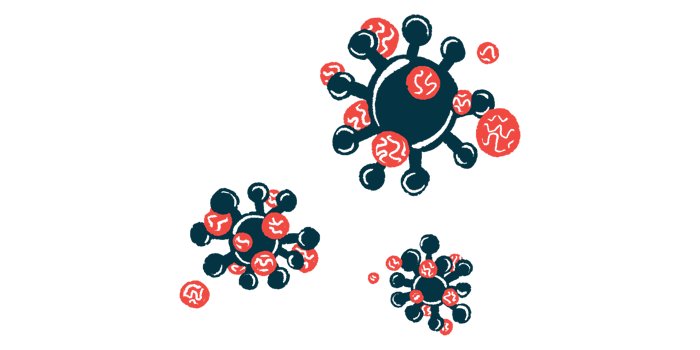Long COVID symptoms lead to hEDS diagnosis in small study
Virus may trigger immune response in patients with preexisting hypermobility
Written by |

Clinicians should test for hypermobile Ehlers-Danlos syndrome (hEDS) or hypermobility spectrum disorders (HSD) if their patients continue to show persistent symptoms after infection with SARS-CoV-2, the virus that causes COVID-19, according to a small report.
“We conclude that hEDS/HSD should be considered … especially in patients of female gender and when multisystem neurogenic and musculoskeletal pain are major concerns,” researchers wrote. Neurogenic pain originates in the nervous system, whereas musculoskeletal pain affects the bones, muscles, tendons, and ligaments.
This report highlights the importance of being vigilant of such symptoms and “encourages advancement of the effective identification, diagnosis, and management of hypermobility disorders in the post-pandemic clinical setting,” clinicians wrote in the study “Long COVID and the Diagnosis of Underlying Hypermobile Ehlers-Danlos Syndrome and Hypermobility Spectrum Disorders,” published in the journal PM&R.
SARS-CoV-2 infection can lead to long COVID
Infection by SARS-CoV-2 can lead to prolonged and diverse symptoms, colloquially known as “long COVID.” Besides the lungs being affected, other symptoms include fatigue, cognitive disturbances, and both neurogenic and musculoskeletal pain. Patients may also experience postural orthostatic tachycardia syndrome, which causes dizziness and a fast heart rate when getting up from lying down.
Notably, these symptoms are also characteristic of hEDS and HSD. Both these conditions involve hypermobile joints and stretchy skin, with HSD occurring in patients for whom EDS has been excluded as a diagnosis.
Here, a group of clinicians at Tulane University School of Medicine, in New Orleans, described the outcomes of five women, ages 33 to 51, who did not have a history of a hypermobility disorder.
Up to 15 months after getting COVID-19, all patients developed persistent and debilitating fatigue, accompanied by cognitive dysfunction, joint pain, and dysautonomia, which is a group of disorders caused by abnormalities in the autonomic nervous system that governs involuntary body functions like heartbeat and breathing.
“This constellation of symptoms aligned with those familiarly seen in patients at our institution’s Ehlers-Danlos Syndrome/Hypermobility Spectrum Disorder Clinic, prompting referrals,” the researchers wrote.
All 5 women fulfilled criteria for hypermobility spectrum disorder
After physical tests and evaluation of generalized joint hypermobility, all patients fulfilled criteria for HSD. The five women had genetic variants in an enzyme (methylenetetrahydrofolate reductase) linked to the development of hEDS and HSD. Taking into account clinical and lab findings, four women were diagnosed with hEDS and one with HSD.
A mast cell disorder, a condition marked by an excess of immune mast cells, was suspected or confirmed in four of the five women. These patients were advised to supplement with vitamin B9 (also known as folate) and a plant-based antioxidant called quercetin.
The onset of hEDS could be due to the activation of immune responses within connective tissues triggered by the SARS-CoV-2 infection, according to the clinicians.
Overall, “the presence of SARS-CoV-2 itself may trigger a misdirected host immune response to traumatized connective tissue in such patients with preexisting joint hypermobility and may yet represent another possible mechanism for new-onset or worsening connective tissue symptoms within the post-acute infection period,” the scientists concluded.



